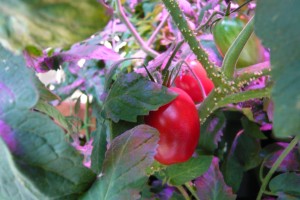Effects of LEDs on the growth of tomato transplants
Based on agricultural volume 97, number two, 2010, page 89 through 98:
Institute of horticulture, Lithuanian research Center for agriculture and forestry
The authors of this study chose tomato plants because they are the most widely indoor cultivated plant across the globe. The tomato plant is a commercially important crop throughout the world in northern latitudes tomatoes are grown in greenhouses, planted in midwinter and harvested until late autumn. Various tomato transplants were cultivated under combinations of LEDs and high-pressure sodium HPS lamps the transplants of tomato hybrids are grown in full chambers a system of five high-power solid-state lighting modules with the main 447nm, 638nm, 669nm, 731nm LEDs were utilized in this experiment are investigative studies revealed the growth of tomato transplants were enhanced under supplemental UV light in the high-power solid-state lighting modules with the main blue red and far red LEDs.
When the plants were supplemented with orange 622 nm, yellow 595 nm, and green 520 nm, the light was not suitable to the growth of tomatoes there were even negative effects of these spectrum that are revealed later in the growth cycle.
Horticulturists have been using electric lamps to grow plants for nearly 150 years, and the path of their development followed from incandescent lighting through open arc lighting until high-pressure sodium HPS lamps, which are still the most popular for supplemental lighting in greenhouses. These familiar orange high-pressure sodium lamps have high electrical efficiencies, and long operating life and a wide spectrum of light which is suitable for many plant species. Unfortunately the peak commission from HPS is in the yellow light or 589 nm region. High amounts of this yellow light can cause stem elongation and lowers the quality of transplants. Solid-state lighting, using LEDs represents a fundamentally different technology from the gaseous discharge type lamps currently used in horticulture and has more advantages than the traditional forms of horticultural lighting. These Opto electronic SSL solid-state lighting devices, feature high radiant efficiency, long lifetime, cool admitting temperature, relatively narrow spectrum emission, short switching time, and contain no mercury or other hazardous contaminants.
High brightness LEDs are already available the entire spectrum relevant for our horticulture purposes. Spectra mixes can be customized for specific crops, optimizing maximum production without wasting energy outputting nonproductive wavelengths.
LEDs are well-suited for tissue culture applications, because of their low profile and low radiant heat output. They’ve been extensively tested on plants such as Potato, chrysanthemums, strawberries and bell peppers.




 LED Tube Light
LED Tube Light

